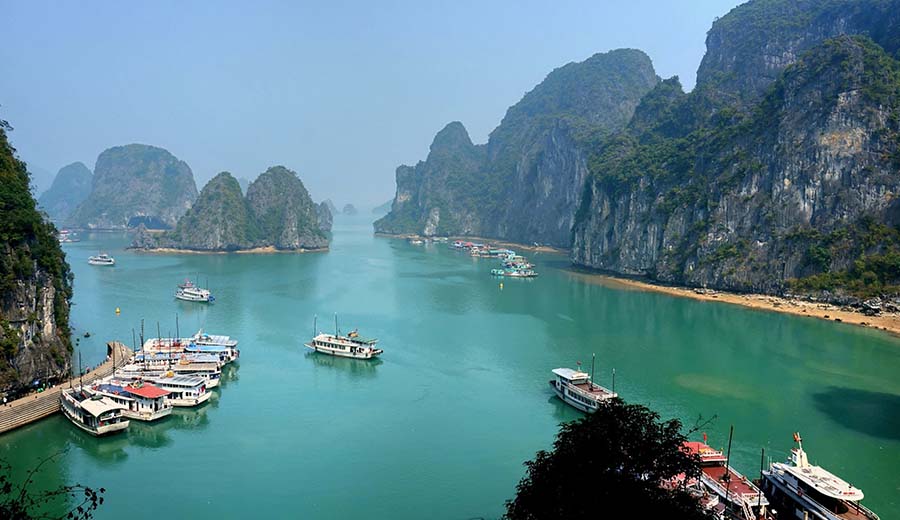14 Places to visit in Vietnam
Places to visit in Vietnam: Located in the easternmost part of the Indochina Peninsula, Vietnam is the 9th most populous Asian country. The country is surrounded by China in the North and Cambodia to the southwest. It is a land of remarkable scenery which varies from lush green mountain terraces in the North to the mesmerizing valleys of the Central highland and the amazing beaches in the South. It has a beautiful collaboration of natural habitats and cultural diversification.
From mountains to the valleys, the country is painted in every shade of green. It is an excellent tourist spot. One can find plenty of man-made historical structures ranging from war museums, colonial structures, and ancient citadels. Many of its ancient buildings portray French influence in their architecture. Their cuisines are regarded as one of the best in the world. Some of the must-visit tourist destinations in Vietnam are as follows:
1. Halong Bay – Places to visit in Vietnam
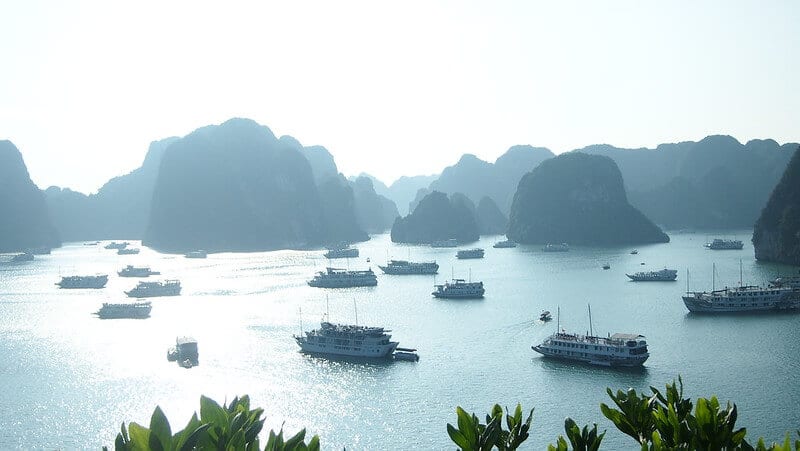
The Karst seascape of Halong Bay is a UNESCO-certified world heritage site. The Gulf of Tonkin, within the bay, has more than a thousand micro limestone islands which have eroded due to water and wind throughout the years. This place allows tourists to cruise over the bay and become awestruck at its overwhelming beauty.
2. Imperial Citadel of Thang Long
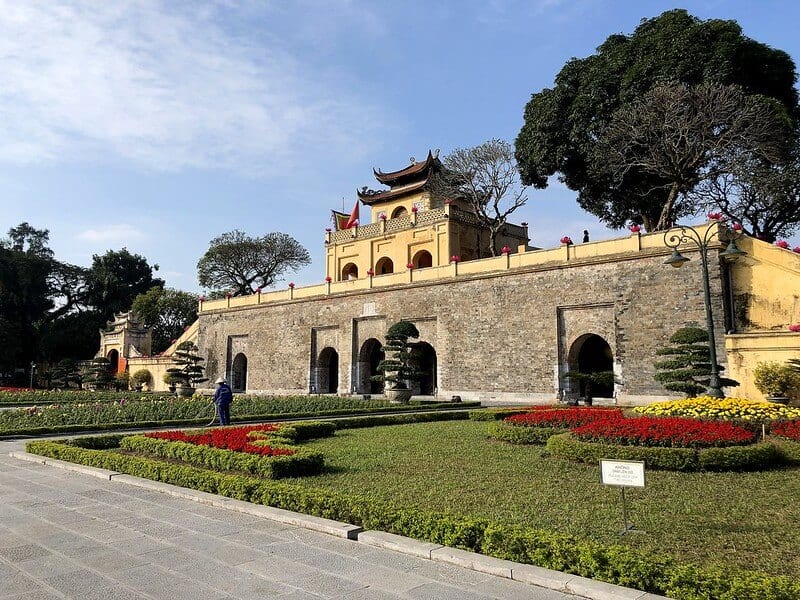
The Imperial Citadel of Thang Long is an old artifact of Vietnamese history and has historical and cultural significance. The building is 40 meters high and is another UNESCO world heritage site. The flag tower is one of the recognizable features of the Citadel. Archaeologists found bronze coins, Ceramics, and pottery from China and many other places in Asia. This demonstrates the ongoing trade within the countries since the historic eras.
3. Ho Chi Minh City
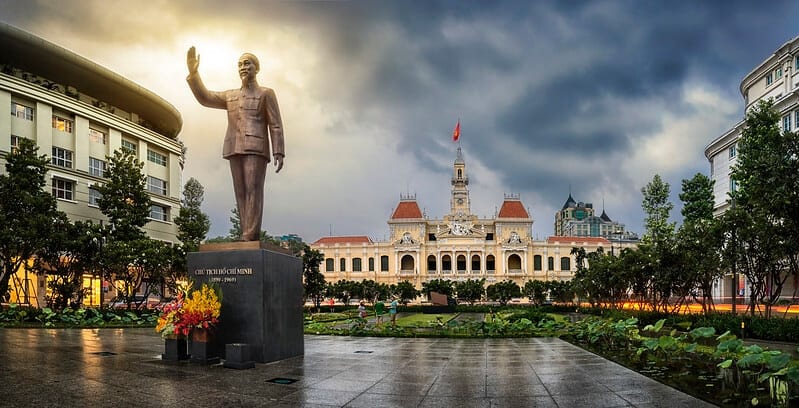
Formerly known as Saigon, the city was the capital of the country during the Vietnam War. It lies along the Saigon River, in Southern Vietnam. It was named after a very famous political figure in Vietnam, Ho Chi Minh. After his death, his body is preserved in a glass case at the Ho Chi Minh Mausoleum. Although there is no entry fee, yet the visitors are expected to dress modestly in order to show respect to the great leader.
4. Mekong Delta
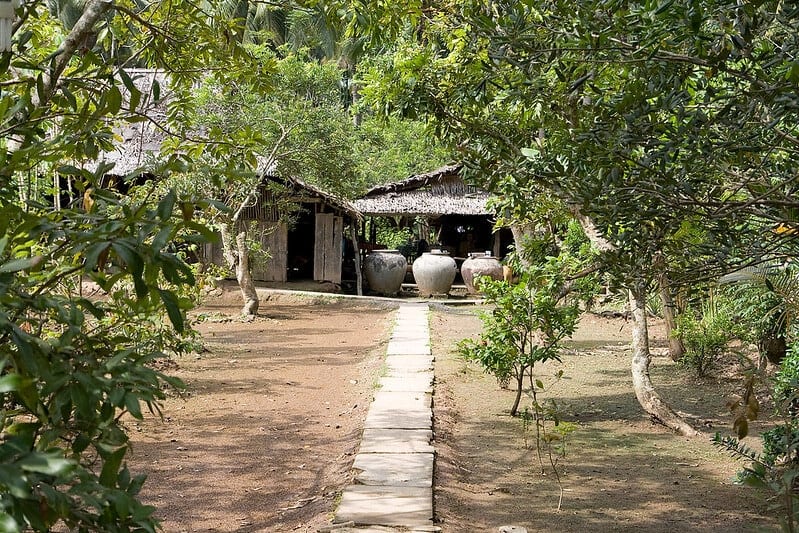
One of the many attractions in Southwestern Vietnam is the Mekong Delta. From the floating markets, rice paddies, fruit orchards, and sugarcane groves to the sanctuaries and quaint villages, Mekong Delta has everything one would love to explore. The fertile delta region allows the cultivation of food crops mainly rice. It is also known as the rice basket of Vietnam.
5. Chu Chi tunnels top Places to visit in Vietnam
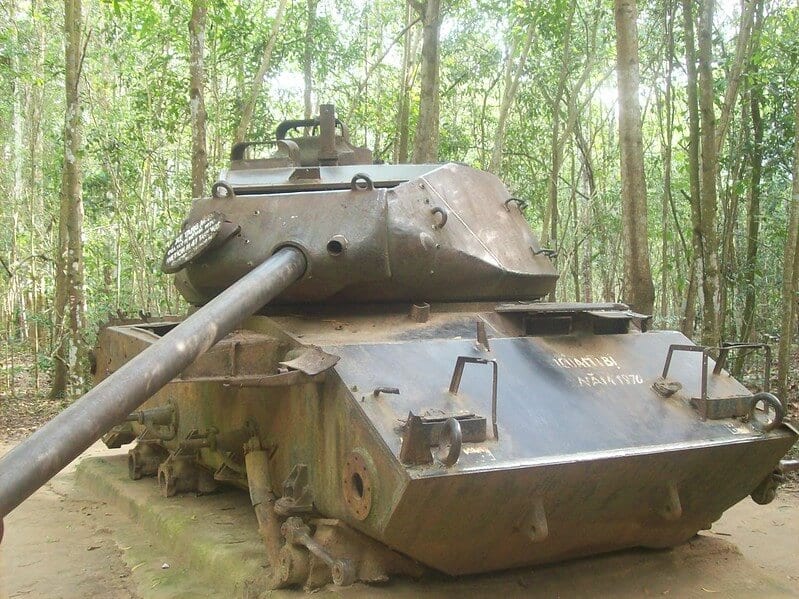
These are the war tunnels created for Vietnamese soldiers to survive underground during the war. They have now become huge war museums. The tourists are allowed to have a look at how and under what conditions the soldiers survived during the war against the French. The underground tunnels expand up to 120 km and consist of trapdoors, kitchens, storage facilities, living areas, and hospitals.
6. Hanoi:
Hanoi, the capital city of Vietnam, is a perfect blend of traditional culture and modern development. The city is famous for its historical landmarks such as the Ho Chi Minh Mausoleum, the Temple of Literature, the One Pillar Pagoda, and the Old Quarter. Visitors can explore these cultural sites, taste authentic Vietnamese cuisine, shop for local goods, or simply stroll around the streets and observe the daily life of the locals.
7. Ha Long Bay:
Ha Long Bay is a stunning natural wonder located in the Gulf of Tonkin. The bay is known for its thousands of towering limestone islands and islets and its emerald-green waters. Visitors can take a cruise, kayak, or paddleboard through the stunning landscapes, explore caves and grottoes, or simply relax on the deck of their boat and take in the beauty of the surroundings.
8. Hoi An:
Hoi An is a UNESCO World Heritage site and a charming ancient town located in central Vietnam. The town is famous for its well-preserved architecture, including traditional houses, assembly halls, and shrines. Visitors can wander through the narrow streets, shop for local goods, and try traditional dishes such as cao lầu and bánh mì.
9. Hue:
Hue is a historic city located in central Vietnam and was the former capital of the Nguyen dynasty. The city is famous for its imperial citadel, the Forbidden Purple City, the Thien Mu Pagoda, and several mausoleums and temples. Visitors can explore these cultural sites, sample local cuisine, or simply relax and enjoy the peaceful atmosphere of the city.
10. Sapa:
Sapa is a mountainous region in northwest Vietnam, known for its stunning natural beauty, diverse ethnic communities, and unique culture. Visitors can trek through the rolling hills and terraced rice paddies, interact with the friendly hill-tribe people, or simply relax and take in the breathtaking views.
11. Nha Trang:
Nha Trang is a coastal city located in central Vietnam and is known for its stunning beaches, crystal-clear waters, and vibrant nightlife. Visitors can go swimming, scuba diving, or kayaking, or simply relax on the beach and soak up the sun.
12. Phu Quoc Island:
Phu Quoc Island is a tropical paradise located in the Gulf of Thailand and is known for its stunning beaches, lush jungle, and excellent seafood. Visitors can relax on the beach, go snorkeling or diving, or explore the island’s vibrant night markets and seafood restaurants.
13. Mui Ne:
Mui Ne is a coastal town located in southeast Vietnam and is known for its stunning beaches, towering sand dunes, and vibrant fishing village. Visitors can go kite surfing, windsurfing, or simply relax on the beach, take in the views, and explore the nearby attractions.
14. Mai Chau:
Mai Chau is a picturesque valley located in northwest Vietnam, surrounded by lush green mountains and rice paddies. Visitors can go trekking, cycle, or simply relax and soak up the peaceful atmosphere of the rural countryside.
Foods in Vietnam
Vietnamese cuisine is known for its unique blend of flavors, fresh ingredients, and healthy cooking methods. Some popular dishes include:
- Pho: A noodle soup consisting of broth, noodles, herbs, and meat, typically beef or chicken.
- Banh Mi: A sandwich filled with pickled vegetables, cilantro, and meat, usually pork or chicken, on a baguette.
- Spring Rolls (Cha Gio): Thinly wrapped deep-fried or fresh rolls filled with meat, noodles, and vegetables.
- Bun Cha: Grilled pork patties served with noodles, herbs, and a dipping sauce.
- Banh Xeo: A crispy crepe filled with shrimp, pork, and beansprouts, served with lettuce leaves for wrapping.
- Bahn Cuon: Steamed rice rolls filled with minced pork, mushrooms, and onions.
- Goi Cuon: Fresh spring rolls filled with seafood, meats, and vegetables.
- Com Tam: Broken rice served with grilled meat, eggs, and pickled vegetables.
- Ca Phe Trung: Egg coffee, a unique blend of egg yolks, condensed milk, and coffee.
- Che: A sweet dessert soup made with various ingredients such as beans, fruits, and tapioca pearls.
These are just a few examples of the diverse and flavorful cuisine found in Vietnam.
Activity
Vietnam offers a wide range of activities for tourists to enjoy, including:
- Trekking: Vietnam’s diverse landscapes, including the rolling hills of Sapa and the lush jungles of the Central Highlands, offer many opportunities for trekking and hiking.
- Cycling: Rent a bike and explore the countryside, beaches, and cities of Vietnam, including Hoi An and the Mekong Delta.
- Water Activities: Vietnam is home to some of the world’s most stunning beaches and bays, making it an ideal destination for swimming, snorkeling, kayaking, and scuba diving.
- Cultural Tours: Visit historic sites and landmarks such as the Imperial Citadel in Hue, the Old Quarter in Hanoi, and the War Remnants Museum in Ho Chi Minh City.
- Food Tours: Sample delicious Vietnamese cuisine and explore local markets, food stalls, and street food scenes in cities such as Hanoi and Hoi Minh City.
- Motorbike Tours: Rent a motorbike and explore the scenic roads and villages of Vietnam, including the famous Ho Chi Minh Trail.
- Spa & Wellness: Relax and rejuvenate in one of Vietnam’s many spa and wellness centers, offering a range of treatments such as massages, herbal baths, and acupuncture.
- Festivals & Events: Attend local festivals and events, such as the Hue Festival, the Hoi An Lantern Festival, and the Tet (Lunar New Year) Celebration.
These are just a few examples of the exciting activities and experiences that await visitors to Vietnam.
How to reach
Vietnam is well connected to the rest of the world by air, road, and sea. The main entry points for tourists are Hanoi and Ho Chi Minh City, which are both served by major international airports.
- By Air: The two main international airports in Vietnam are Noi Bai International Airport in Hanoi and Tan Son Nhat International Airport in Ho Chi Minh City. Direct flights are available from several major cities around the world, including Bangkok, Hong Kong, Kuala Lumpur, and Singapore.
- By Road: Visitors can cross the border into Vietnam by road from Cambodia, Laos, and China. There are several international border crossings, including Moc Bai (Cambodia), Lao Bao (Laos), and Dong Dang (China).
- By Sea: Visitors can arrive by sea to Vietnam’s major port cities, including Ho Chi Minh City and Haiphong. There are also ferry services that connect Vietnam to the nearby island of Phu Quoc.
Once in Vietnam, tourists can use a combination of modes of transport, including taxis, buses, trains, and domestic flights, to travel to their desired destinations.
Best time to visit
The best time to visit Vietnam depends on the region and the type of activities you plan to do. Generally, the country experiences a tropical climate, with high humidity and temperatures ranging from 20°C to 35°C.
- North Vietnam: The best time to visit the north, including Hanoi and Ha Long Bay, is from September to December, when the weather is dry and cool.
- Central Vietnam: The central region, including Hoi An and Hue, experiences two distinct seasons, with dry and cool weather from February to August and wet and hot weather from September to January.
- South Vietnam: The south, including Ho Chi Minh City and the Mekong Delta, has a tropical climate with high humidity and temperatures throughout the year, with a slight reduction in rainfall from November to April.
It’s worth noting that Vietnam is also home to several monsoon seasons, which can cause heavy rainfall and flooding in some areas. To avoid the rainy season and its associated travel disruptions, it’s best to plan your trip during the dry months, typically from September to December in the north and February to August in the central region.

